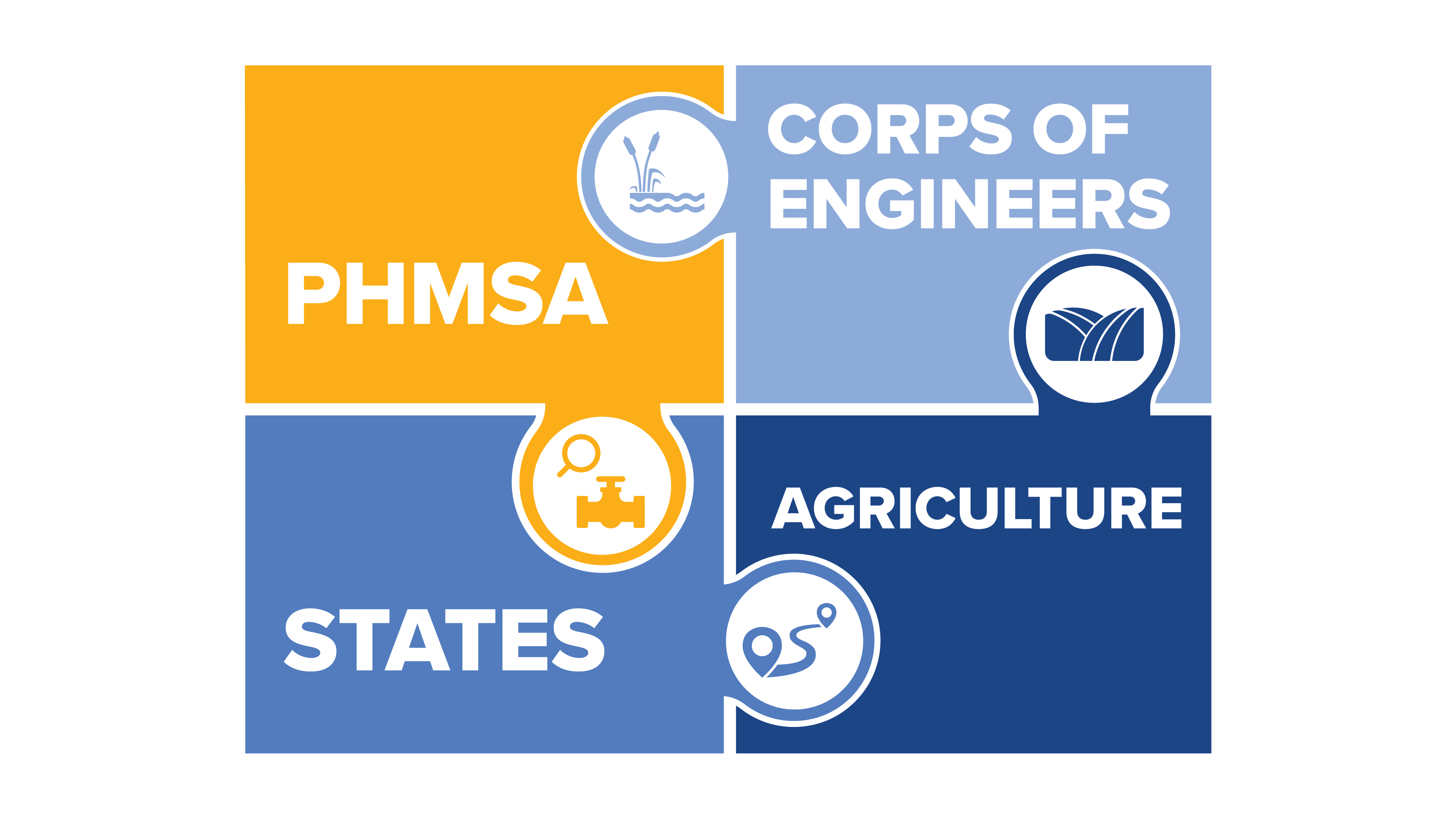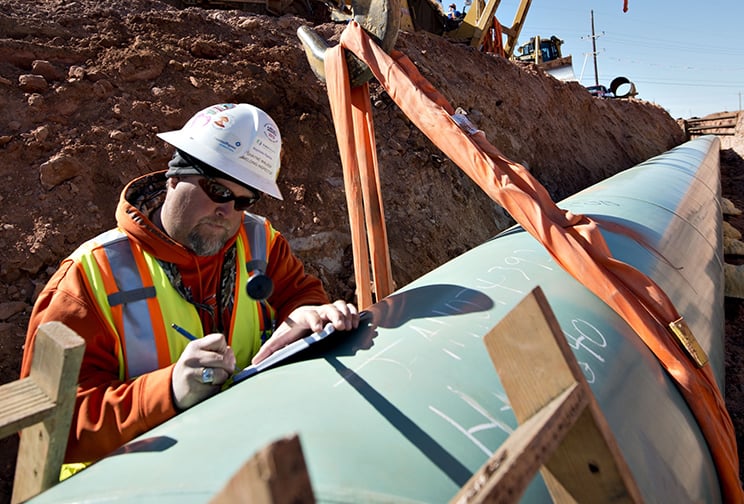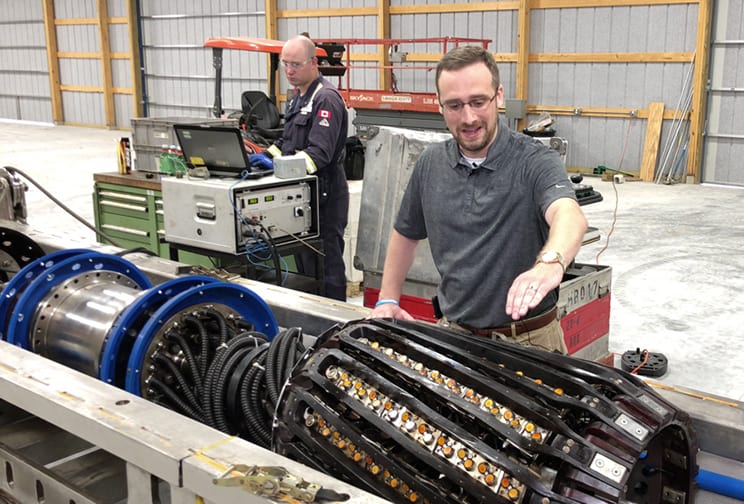Pipeline Safety is a Partnership of Protection
Multiple government agencies work together to ensure pipeline safety and environmental protection. Each agency at the federal, state, county and local levels performs a role in pipeline projects.

PHMSA
The Pipeline and Hazardous Materials Safety Administration (PHMSA) within the U.S. Department of Transportation regulates pipeline safety
Congress assigned to PHMSA the powers to regulate, inspect and enforce safety requirements for pipelines connected to interstate systems in the Hazardous Liquid Pipeline Safety Act of 1979
- PHMSA oversees pipeline design, construction, operations, maintenance and emergency response
CORPS OF ENGINEERS
- The U.S. Corps of Engineers regulates impacts on wetlands and waters of the United States
- The Corps reviews and issues permits if a pipeline project proposes to cross a significant stream or river
- Other federal agencies such as the Fish and Wildlife Service or Bureau of Land Management may review projects under their purview
STATES
- States regulate the siting of pipelines carrying liquid products (e.g. crude oil, propane, CO2)
- Each state establishes its own rules and processes for determining whether a pipeline project qualifies for eminent domain
- Pipeline projects must follow rules set by states for surveying, easements, eminent domain and public outreach
AGRICULTURE
- Federal, state and county agriculture agencies manage soil conservation programs
- Natural Resources Conservation Service recommendations for soil management
- Counties and third parties monitor agriculture management plans
By working together, government agencies each perform their role in a new pipeline project.
Federal, state, and local requirements each have their place. This Partnership of Protection makes sure new pipeline projects follow the rules and are built and operated safely.
CO2 Pipeline Operations Safety
Current federal law and government pipeline safety regulation requires CO2 pipeline operators to proactively inspect their pipelines and conduct preventive maintenance. Pipeline personnel monitor operations 24/7 and can shut down a CO2 pipeline if there is a problem. CO2 pipelines are constructed with high-grade steel and a protective coating to help prevent corrosion.
While incidents are rare and federal government safety data shows CO2 pipelines are some of the safest pipelines in operation, it’s still important to be prepared for anything. That’s why the industry is committed to providing first responders with emergency responder training programs, including CO2, to help keep our communities safe.
Hi-Tech Inspection Tools
Preventive Maintenance
24/7 Monitoring
Hi-Grade Steel & Protective Coatings
Proactive inspections, preventive maintenance, and 24/7 monitoring all keep pipelines and surrounding areas safe.



